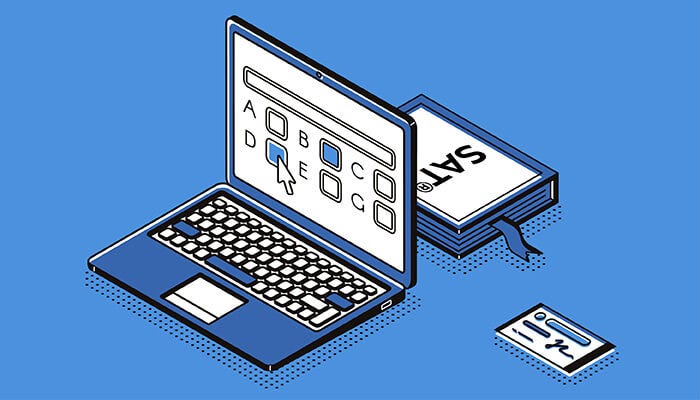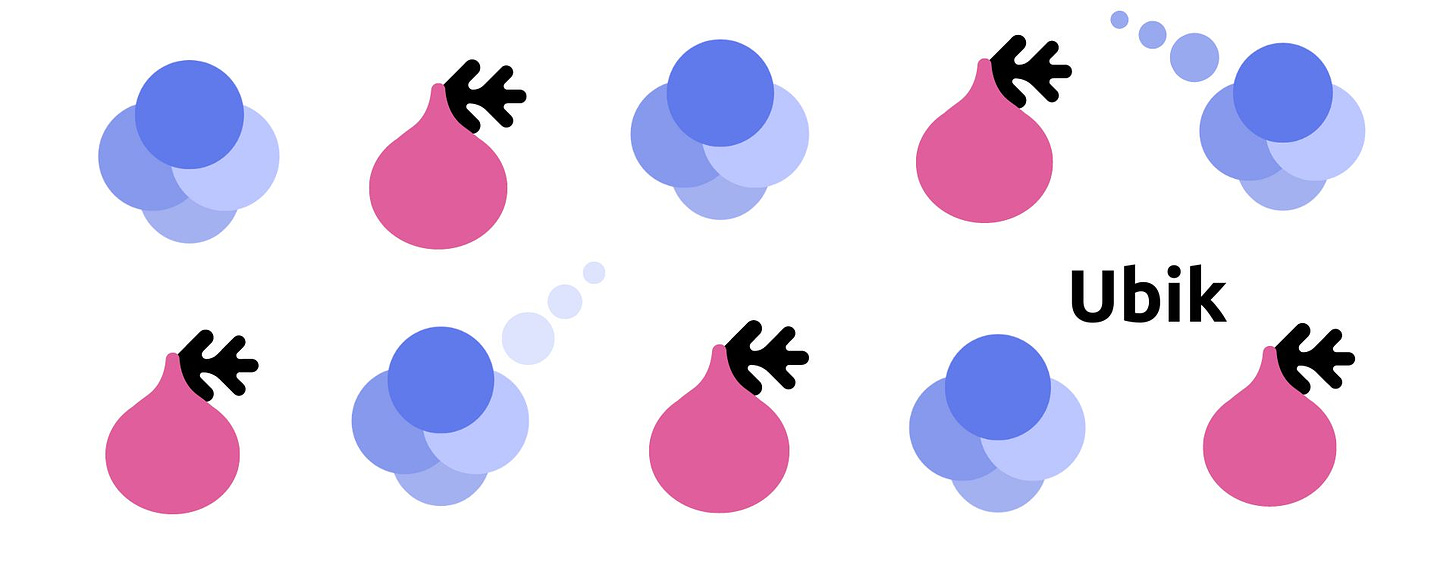- Published on
The SAT® Goes Digital
Welcome to the Ubik Blog!
If you still need to subscribe, subscribe here!
One of the Ubik interns, Aya Gilad-Muth, wrote this edition of the Ubik newsletter!
The Shift from Classroom to Bedroom
 Image Credits: Revolution Prep, 2022
Image Credits: Revolution Prep, 2022
One of the lasting effects of the COVID-19 pandemic is the shift into digital spaces, which has caused significant changes in many sectors, including higher education. Entering high school during the pandemic was an insane experience for me and my friends. We went an entire year without seeing each other's faces; the city moved classes online.
But we were in a better position than most; it was just our first year of high school, nothing significant was happening, and we didn't need to take the SAT® that year, unlike millions of other students.
The Challenge of Administering the SAT®
During the pandemic, a significant challenge in higher education was administering the SAT®, which typically requires many students to gather closely in a closed room for over three hours. It's tough to maintain a social distance under these conditions. In response, many colleges and universities decided to go "test optional" or "test blind," allowing students the freedom not to take the test. The "test-optional" and "test-blind" policies had existed before the pandemic in a handful of schools that felt the tests didn't always accurately reflect a prospective student's potential.
 Image Credits: Getty Images, 2020
Image Credits: Getty Images, 2020
Due to these new policies, the percentage of students who took the test plummeted from 76% of high school students to 45%. Many schools have kept the test-optional policies post-pandemic, hoping this would encourage more students to apply and boost their admissions rates. As a result, many students are still choosing not to take the SAT®.
Financial Impact
This is a problem for The College Board, proctors of the SAT® (formerly known as the "Scholastic Aptitude Test"), whose revenue from the standardized test fell by over 404 million to $289 million. The College Board recently announced that they are permanently digitizing their infamous 3-hour-long test.
Many speculate that the College Board made this change as a last-ditch attempt to stay relevant in a post-pandemic world where more colleges are going test-optional and fewer students are taking the SAT®s.
Key Changes in the Digital SAT®:
Format and Duration : The test has moved to an app called "Bluebook," which simulates the old test by allowing students to annotate and cross out answers. The test is now 45 minutes shorter, at 2 hours and 15 minutes, with 98 questions.
The Paper SAT® had three sections: Writing & Language, Reading, and Math. The Digital SAT® consists of two sections: Writing & Reading and Math.
Students have 1 minute and 23 seconds per question – around 13 seconds more than in the Paper SAT®.
Adaptive Difficulty : The Digital SAT® changes the difficulty of sections based on the student's academic performance, getting easier as students progress through the test.
The Paper SAT® got more difficult progressively, making the test more of a challenge as time passed.
Calculator Usage : Students can use a calculator for all math sections during the Digital SAT®.
The Paper SAT® only had one section that permitted the use of calculators.
Passage Format : Instead of long multi-page passages, the new Digital SAT® features shorter passages, each with a single corresponding question.
- Inversely, the Paper SAT® had lengthy, multi-page passages. Each with 8-11 corresponding questions.
Results Turnaround : Results are available within a week, significantly reducing the wait time for students.
Loading...
Reactions and Implications
Many students, especially English language learners and those with ADHD and dyslexia, report that the digital SAT® is less intimidating and more accessible to complete. Many English teachers, though, complain that the shorter format of the passages is meant to satisfy the chronically online younger generations with short attention spans and isn't promoting the reading comprehension skills this new generation of students is losing. The College Board has alleged, though, that the rigor of the tests has not changed.
Reflecting on the SAT®: Digitalization and Societal Changes
I’ve never been a fan of the SAT®. Not because I think the SAT® is inherently unusable, but because I do not believe it should be administered by a “nonprofit” that cannot account for 90% of its revenue and forces students to sign NDAs before taking the tests. Whether or not the motivation for the digitalization of the tests was profit maximization, I think it’s a good change that has been coming for a long time. Many other alterations also reflect fundamental societal changes the test needed to address.
The shift to digitization is an important milestone in this nearly century-old test, the most significant change since calculators were allowed 30 years ago. It reflects an adaptation to the post-pandemic landscape and acknowledges the changing challenges students will expect in higher education and beyond. It remains to be seen whether the College Board’s gambit will be successful–an easier but no less rigorous test–or if the critics will be proven right.
Work Cited
Dorman, John L. “The College Board Is Raking in Cash as It Promotes Its AP Exam among Low-Income Students, Many of Whom Are Failing It.” Business Insider , 2023, www.businessinsider.com/ap-exams-college-board-taxpayers-college-prep-millions-test-fees-2023-11#:~:text=The%20Times%20reported%20that%20from. Accessed 13 Mar. 2024.
Egan, John. “2024 Will See a Fully Digital SAT – Forbes Advisor.” Www.forbes.com , 15 Nov. 2023, www.forbes.com/advisor/education/student-resources/digital-sat-2024/#:~:text=A%202021%20pilot%20project%20by. Accessed 5 Mar. 2024.
Goldstein, Dana. “No More No. 2 Pencils: The SAT Goes Fully Digital.” The New York Times , 8 Mar. 2024, www.nytimes.com/2024/03/08/us/sat-online-digital-test-college.html.
Murugaian, Deepak. “EdisonOS : Creating Digital SAT Tests with College Board’s Question Library.” Www.edisonos.com , 2024, www.edisonos.com/blog/cb-educator-questionbank-breakdown#:~:text=While%20you%20see%20only%2098. Accessed 13 Mar. 2024.
Here’s some important stuff you should check out :)
Apple and Google Are Discussing a Deal to Bring Generative A.I. to iPhones
The NYCEDC proposes $100 Million climate innovation hub in Sunset Park
Check out our AI Education tool here:
Fiig.ai by Ubik
Fiig.ai from Ubik Studio is an academic tool that helps humans collaborate with AI to understand research without sacrificing learning. At Ubik, we aim to create ethical AI tools that impact positively.
Join us
After making an account at fiig.ai, users can:
SEARCH peer-reviewed journals
Get help using AI studies findings to PLAN projects
COLLABORATE with AI to finalize reports (with citations)
